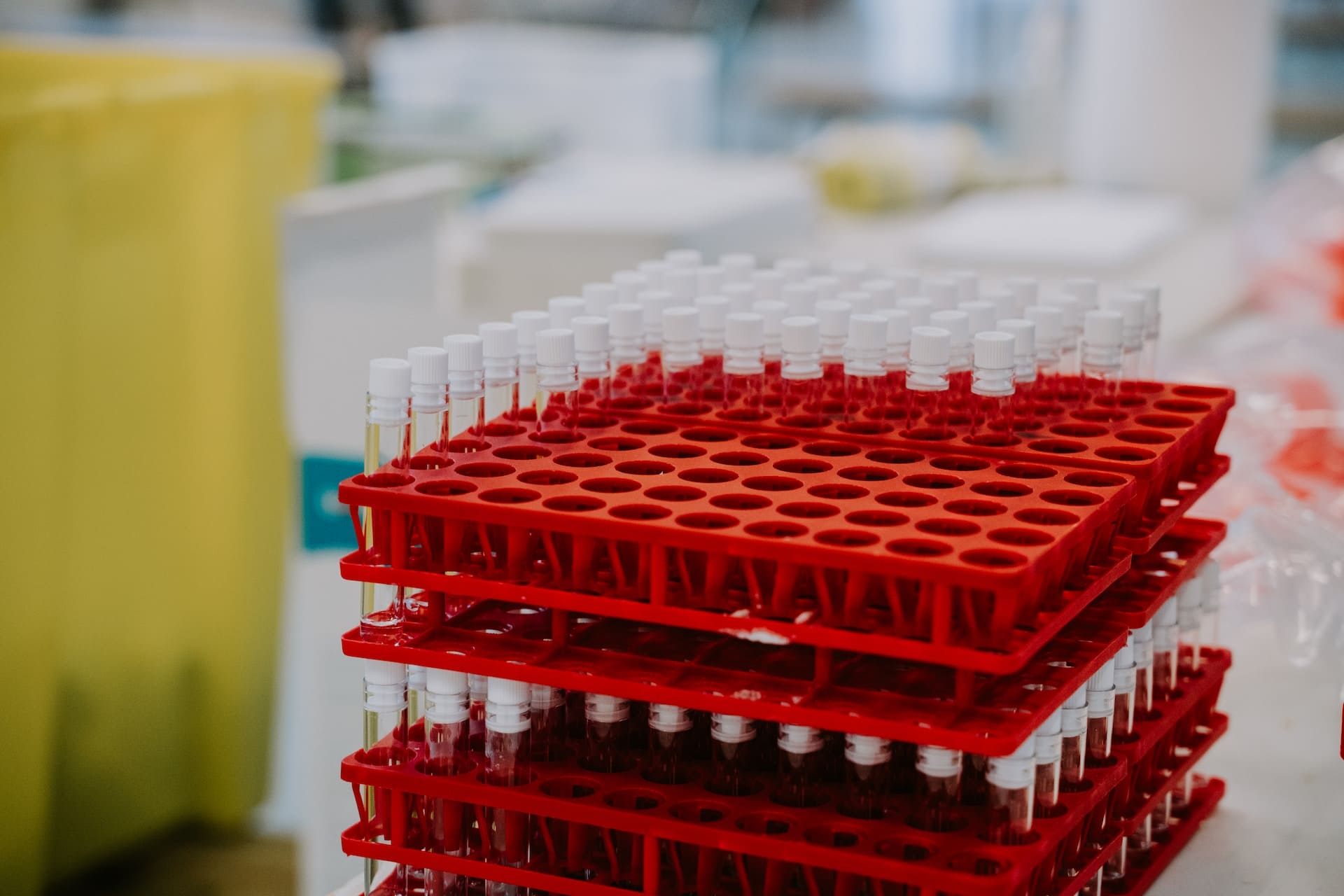Strengthening Preparedness for the Next Pandemic: Interview with Ramin Sabet-Azad, CMC Lead, CEPI

In this Industry Spotlight interview, we talk to Ramin Sabet-Azad, CMC Lead for the Coalition for Epidemic Preparedness Innovations (CEPI), an organisation that is strengthening the worlds readiness for future pandemics. We ask what CEPI does to mitigate the risks of global pandemics, what are the challenges associated with this work, how CMC ties into this goal, and the technologies and innovations that are helping us prepare. Thank you Ramin for speaking to us on this important topic.
Who are CEPI and what do you do?
CEPI’s (The Coalition for Epidemic Preparedness Innovations) vision is a world in which epidemics and pandemics are no longer a threat to humanity. CEPI was launched in 2017, and the organization’s mission is to accelerate the development of vaccines and other biologic countermeasures against epidemic and pandemic threats so they can be accessible to all people in need. The organization was born in part out of the experiences of the Ebola epidemic in West Africa, when a tragic failure to prepare for a foreseeable infectious disease cost the lives of over 11,000 people. But it is also the response to a long-acknowledged ‘market failure’ which means vaccines for epidemics rarely get developed in ‘peacetime’ and the world is left to scramble when a crisis hits.
We work by funding the development of vaccines against emerging infectious diseases and enabling equitable access to these vaccines for affected populations. We do this through our work as a coalition of vaccine developers, manufacturers, sovereign governments, philanthropies, civil society and global health organizations.
CEPI has embarked upon an ambitious five-year plan – called CEPI 2.0 - to dramatically reduce or even eliminate the future risk of pandemics and epidemics. The plan aims to urgently address critical COVID-19 and coronavirus vaccine R&D gaps; develop vaccines against known high-risk pathogens; and enable us to prepare now for future threats, in a way which benefits the entire world. Central to the plan is CEPI’s ambition – embraced by the G7 and G20 - to compress the time taken to develop safe, effective, globally accessible vaccines against new threats to just 100 days. Achieving this ‘100 Days Mission’ would give the world a fighting chance of tackling and containing outbreaks close to the source, before they spread around the world and become pandemics.
What are some of the challenges that we face in epidemic preparedness?
We have entered a new era of epidemic and pandemic risk, evidenced by the increasing prevalence, speed and spread of outbreaks of emerging and re-emerging diseases. So even as our political leaders grapple with a host of other crises, now is not the time to deprioritize epidemic and pandemic threats. We need to recognize that infectious diseases undermine our health, economic, and even national security -- and plan, prepare, and invest accordingly. Sustained and continued investments in preparedness research and development (R&D) and manufacturing of medical countermeasures that meet the urgency of the situation are required to enable a resilient response to future outbreaks with speed, scale and access. This should include support for the 100 Days Mission and global investment in the innovations needed to enable its success including enhanced global surveillance systems; laboratory, clinical trial, regulatory and manufacturing networks with surge capacity to pivot in the event of an outbreak; and a library of prototype vaccines for the most critical viral families.
RELATED:
- Vaccine Production for Better Global Access
- Pioneers of COVID-19 mRNA Vaccine Win Nobel Prize
- Personalised Cancer Vaccines: Tailored Immunotherapy for Precision Treatment
It is also painfully clear that – in its current configuration - the world’s global health security system is not configured to deliver equity. As we recover from the pandemic and prepare for new threats, it is vital that we re-engineer this system so that it produces better, more equitable outcomes in the future. Designing a new system that produces equity as a “natural” output will require sustained focus, problem-solving, and investment, involving many partners, across the entire value chain. At CEPI we describe this as ‘systems equity’, a way for the world to rethink its approach to pandemic preparedness and response to put equity first. Equity is the driver of the 100 Days Mission, but it will require all parts of the ecosystem, beyond R&D, to come together in pursuit of this goal. That’s why CEPI takes a systems approach to equitable access, seeking to enable equitable access within a much broader ecosystem of national and international public and private sector partners and networks. It requires a combination of actions and commitments from a broad range of actors, including CEPI.
How does CMC development tie into CEPI's mission to deliver new pandemic vaccines within 100 days?
CMC (Chemistry, Manufacturing and Controls) is a critical component in preparing for and rapidly responding to future outbreaks to meet CEPI’s 100 Days Mission.
CMC involves the development and optimization of manufacturing processes to obtain vaccines of a consistent and high quality that are safe, effective and suitable for human use. This includes ensuring that the necessary tools are available for assessing the quality of vaccine products, and that a resilient supply chain infrastructure is in place to ensure the availability of raw materials and manufacturing components. CMC activities run throughout the development cycle of a vaccine product, starting from early research and development activities on a very small scale, up until and even beyond commercialization of the product.
It is no coincidence that Preparedness and Innovations are both found in CEPI’s name. Both are essential components needed to meet the 100 Days Mission. CMC preparedness activities involve, but are not limited to, building up a library of prototype vaccines for the most critical viral families, supporting the development of pathogen-agnostic platforms through directed investments, as well as investing in geographically diverse manufacturing sites to rapidly produce clinical trial material and commercial products close to the site of any future outbreak. Innovations relate to novel technologies that can support rapid availability of clinical trial and emergency use material in the event of an outbreak. CMC innovations of interest are, for example, manufacturing and the analytical technologies that can speed up manufacturing processes and product release. CMC activities in these areas aim to demonstrate that introducing these new technologies will enable faster and more accessible vaccines without a negative effect on the quality of the product.
In parallel to these activities, significant front-loading is required on all fronts, not least with regulatory authorities. In terms of CMC, CEPI is working with regulators to investigate the possibilities to front-load protocols and procedures, technologies, and master files that help speed up the regulatory processes in the event of an outbreak, making material available more rapidly.
What are the most exciting innovations in the landscape of vaccine development and manufacture?
The most exciting innovations in the vaccine landscape today are those that support speed and vaccine equity, as identified in the 100 Days Mission and CEPI’s equitable access goals, respectively. Building a safer world requires innovations that can contribute to a rapid response to a health threat, support availability of vaccines for all, and even enable manufacturing at a scale of billions of doses if required. We must remember that no one is safe unless we are all safe, as the COVID pandemic clearly demonstrated, where access to and distribution of vaccines in the Global South was far from equitable.
Numerous innovations are in development that can support rapid availability of vaccines for human use. These include synthetic biology approaches for mRNA and subunit vaccine manufacturing, or accelerated testing methods for time-consuming assays such as sterility. For scale and access goals, flexible, modular, scalable manufacturing solutions are in development to produce doses when and where they are needed. High expression cell lines are of interest as they enable higher yields and, therefore, higher amounts of doses per produced batch. There is also quite a lot of development in the adjuvant space, which can be a bottleneck for many vaccine developers who cannot screen and implement adjuvants in their products due to complicated licensing agreements and/or business practices. Essential for equity goals are innovations in thermostability, lower cost of goods, and novel formulations. Thermostable vaccines reduce cold chain dependence, and lower production costs, helping to make vaccines more affordable, while novel formulations can enhance ease of distribution and administration of the vaccines. Innovations related to artificial intelligence are also gaining traction in the vaccine area; its potential to support rapid vaccine availability and equity could be huge.
As many of us know, mRNA technology is one of the most impactful innovations that has managed to move into the commercial space in recent years. Manufacturing of mRNA vaccines is highly independent of the immunogen encoded by the mRNA; therefore, mRNA vaccine manufacturing processes can be considered antigen agnostic. This enables more rapid development of this type of vaccine than traditional approaches such as subunit vaccines or viral vectors. The manufacturing process is faster and scalable, allowing scale-up and scale-out of mRNA vaccine manufacturing to the Global South. There are still challenges that need to be addressed in relation to mRNA vaccines, such as access to the lipid nanoparticles used to encapsulate the mRNA, as well as current requirements of ultralow storage temperatures and sophisticated cold chain infrastructure, which is less readily available in countries based in the Global South. Nonetheless, the rapid implementation and acceptance of this novel technology in a generally slow-moving industry is exciting and might accelerate the exploration and implementation of other innovations essential for speed and vaccine equity.
How can improving the manufacture, storage, and transport of vaccines contribute to global health outcomes?
Improvement of vaccine manufacturing, storage, and transport conditions of vaccines can substantially impact global health outcomes in many ways. Improvements related to vaccine manufacturing and availability are vital for responding to outbreaks and other health emergencies to contain the spread of disease. Improving the thermostability of vaccines can also allow storage of the products at higher temperatures, helping to reduce cold chain dependence. This is pertinent to many countries in the Global South where cold chain infrastructure might be underdeveloped.
With this said, it is also essential to investigate and support opportunities to localize vaccine manufacturing. Through the right investments and innovations, vaccine manufacturing capabilities can be extended to all regions of the world. This would also strengthen the Global South's ability to independently respond to health threats and potentially stop the spread of disease at the site of an outbreak, thereby reducing the risk of widespread disease transmission. Ideally, regional manufacturing of vaccines would also drastically reduce storage- and transport needs as vaccines could be administered near the manufacturing site.
Get your weekly dose of industry news and announcements here, or head over to our Biologics portal to catch up with the latest advances in targeted therapies. To learn more about our upcoming Biologics UK conference, visit our event website to download an agenda and register your interest.







